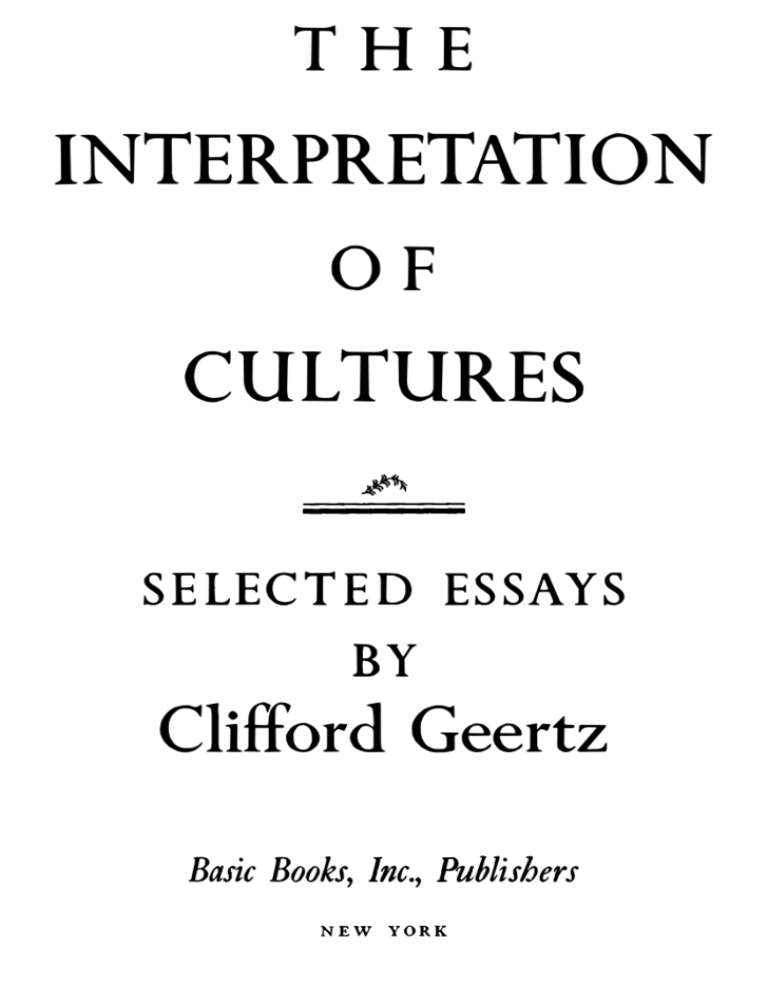
The essays include theoretical expositions (on religion, on culture, on the human mind), commentary on the social sciences, and presentation of anthropological results. Most obviously, the chapters draw upon the same datasets. In some respects, then, The Interpretation of Cultures serves as the collected works of Clifford Geertz.

In a preface, Geertz acknowledges that he wrote the essays at different times, not initially intending to combine them into a single book. The Interpretation of Cultures is structurally unique. If the goal is to understand local meaning, then social scientists should explore the symbolic significance of cultural artifacts (with the term “artifact” admittedly not the mot juste – I mean the term in a very broad sense). Symbols play an important role in this endeavor. Geertz labeled this scientific process “thick description.” To Geertz, the best social science captures complex patterns in detail. It is the task of an anthropologist to unearth all these meanings, and their social contexts.

The visual “reality”: someone moving their eye in a certain manner, can have numerous social meanings. A wink can mean many things: a physiological tick, a flirtation, a sign of confidence, a caricature of someone else who just winked. Geertz makes this point through his oft-cited “winking” example. Anthropology is an interpretation of an interpretation of reality. Really, anthropologists capture reality as it is understood by local actors, and then filter this understanding through their own lens. Prior to the publication of Geertz’ work, field researchers often treated themselves as “human recorders”, travelling to unfamiliar locales, penetrating the local world, and recording local “reality.” Geertz, through philosophical argumentation, made a fairly basic point, albeit eloquently enough to garner attention from his peers: it is not possible for social scientists to record a tangible social reality. The first chapter, Thick Description: Toward and Interpretive Theory of Culture, is frequently referenced by social scientists. First, the book altered how anthropologists perceived their work – The Interpretation of Cultures is an epistemological work.

The longevity of the book (excerpts are still read in social science classes) has multiple attributions. How many Westerners are truly fascinated enough by the details of Indonesian culture to read 400 plus pages on the topic (certainly not I). Yet, it is certain that, if The Interpretation of Cultures were mere anthropological description, the book probably would not have survived. The book is structured around anthropological description, with Geertz relying on field data he gathered mostly in the 1950’s and 1960’s. The late Clifford Geertz was lauded for his 1973 anthropological volume, and I do not find this to be hype. The Interpretation of Cultures is an academic classic.


 0 kommentar(er)
0 kommentar(er)
